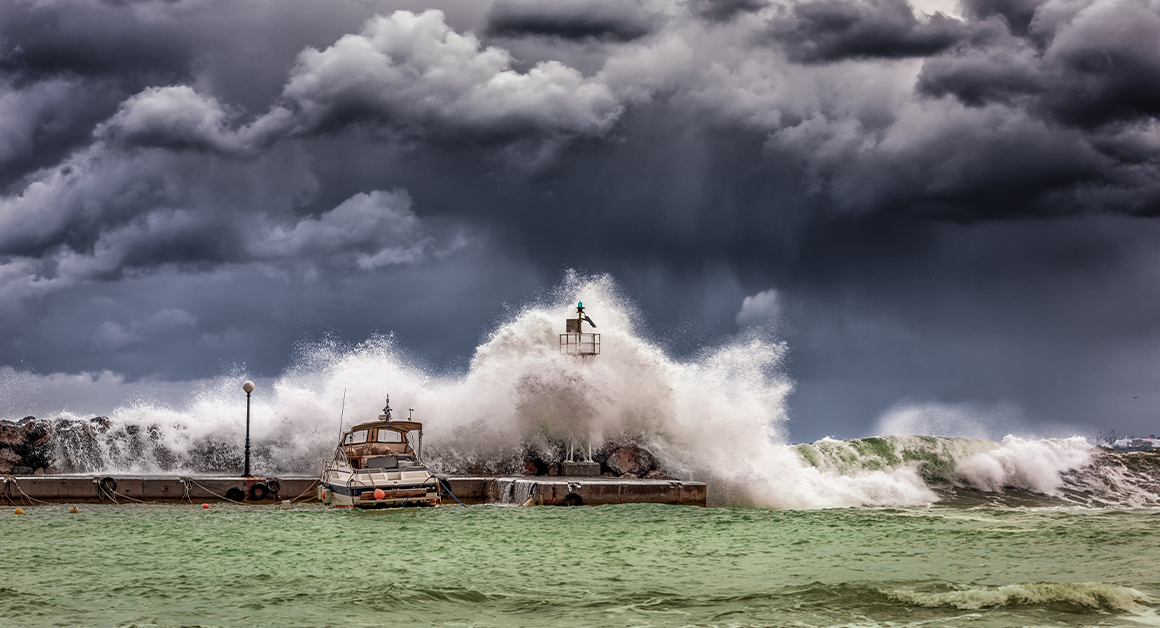Family Caregiver’s Guide to Senior Disaster Preparedness Planning
Movies depicting fictional disasters and apocalyptic scenarios tend to attract large audiences seeking an escape from reality. However, in the real world, climate change-induced weather patterns that endanger lives are far from entertaining. Severe weather events such as tornados, hurricanes, typhoons, monsoons, floods, fires, ice storms, and blizzards affect tens of millions of Americans annually. Extreme droughts, heat waves, and cold spells pose significant dangers for millions more. Any of these occurrences can wreak havoc, displace, demolish, injure, or even kill people. This is why a responsible caregiver of a senior should consider creating a disaster preparedness checklist and emergency supply kit to help them safely navigate any extreme event.
Prepare in Advance
Natural disasters and other emergencies can strike with little warning, making it essential to be prepared. This is especially true for older adults, who may have mobility, vision, and hearing issues, as well as underlying health conditions and medication regimens that make them more vulnerable. Disasters can disrupt supply chains, transportation, communication, and utility systems, making prescription medications, fresh water, contact numbers, and escape routes inaccessible. Caregivers and seniors must have a disaster preparedness checklist and emergency supply kit ready to avoid a critical situation.
Senior Living Community Precautions
While public health departments have general disaster plans, they often don’t account for the specific needs of the elderly. Most senior living communities’ disaster responses are limited to escorting residents to a storm shelter. Seniors and their families should be advocates for their own safety and ask management what disaster preparedness plan is in place. If there isn’t one, they should advocate for creating one, and then review and test the plan. With a disaster preparedness checklist and emergency supply kit, caregivers and seniors can have peace of mind and, in some cases, save lives.
What To Ask To Ensure There’s a Plan
To ensure that there is a disaster preparedness plan in place for the elderly, experts recommend asking the following questions:
- How are power outages handled? Are there backup generators, and are they maintained regularly?
- How will staff assist mobile and non-mobile residents?
- What’s the ratio of caregivers to residents in an emergency?
- Will extra staff be brought in to respond to the crisis?
- How will staff communicate with family members about processes and contingencies during an emergency?
When evaluating living facilities, it’s best to avoid those where staff appear overworked, stressed, or frantic during normal working conditions. If they can’t handle regular tasks, it’s doubtful that they’ll be effective during an emergency.
Proactive Tips to Get Started
Since older adults might not prepare for disasters themselves, it’s up to family caregivers to take charge of the situation. Here are some tips to be proactive:
- Create an easy-to-read list of family, friends, neighbors, primary care doctors, pharmacies, food pantries, and local human and emergency services organizations, along with phone numbers and emails. These resources can be lifelines in the case of a disaster.
- Ensure that you have duplicates of these vital contacts.
- Display this contact list in a conspicuous area of the senior’s living space and store a copy in a fireproof and waterproof container that is easily accessible. Caregivers should also have their own copies.
- Update the contact list annually.
- Make copies of important documents (personal, financial) and store them in a waterproof and fireproof container.
- Create an easily portable emergency supply kit containing a few days’ worth of medications, non-perishable foods and water, medical devices (hearing aids and batteries, glasses or contacts, etc.), a flashlight and batteries, personal hygiene items, and cell phone chargers. Supplies may need to be replenished or updated annually.
- Keep the senior’s living space clutter-free, paying close attention to stairs, doors, and windows to ensure that entry and exit points are unobstructed and easy to navigate.
- Ensure that any mobility assistance device, such as a walker, cane, or wheelchair, is readily available and functional.
Taking Action is the Most Effective Approach
When a family caregiver is separated from a senior loved one by distance or infrastructure damage during a disaster, they should reach out to local emergency resources or even the police to conduct a well-being check. This allows them to ensure that everything is fine or provide medical attention, supplies or evacuation as needed.
Seniors living alone in disaster-prone areas should have a mapped-out and tested escape route and relocation site. It’s also essential to have a plan for transporting and relocating the senior independently and securely instead of relying on chance or forced relocation by emergency services.
Seniors who have already experienced natural disasters in their area may have safety precautions in place. However, cognitive impairments, overconfidence, or stubbornness may make them inattentive or lax to impending danger. Therefore, caregivers should conduct safety drills and review emergency plans and kits with seniors once or twice a year to ensure everyone is on the same page, and the necessary contacts and supplies are handy and updated.
Some seniors may resist this as intrusive or over the top. Some may choose to shelter in place even when a storm is bearing down. Caregivers should emphasize that they only want what is best for the senior by ensuring they have what they need and know what to do.
Practicing safety measures and taking precautions can mean the difference between getting out of harm’s way, being prepared to ride things out, or putting oneself at unnecessary risk due to inaction or indecision.
